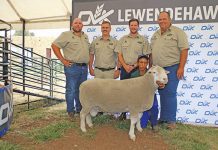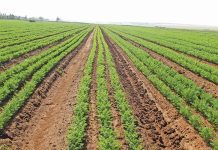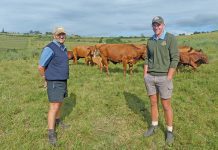Using pig effluent to generate electricity and carbon credits is an increasingly popular venture. The Humphries Boerdery is one of the first in South Africa to try it, writes Sharon Götte.
In response to growing concerns over global warming, and interest in the potential to generate energy from methane emissions produced by animals in concentrated farming environments, Cargill Environmental Finance went in search of a pig farm in Africa where they could build an anaerobic biodigester. The company’s headquarters are in the US and it has been operating in South Africa since 1994, mainly in the grain procurement and supply industry. Cargill already has biodigesters in other countries and has implemented other types of greenhouse gas emissions reduction projects around the world.
The farm in South Africa needed to qualify as suitable for such an investment. “It had to fulfil criteria including the size of the operation, the cleanliness of the farm, its proximity to our offices in Johannesburg, and the farmer’s knowledge base and how open-minded he was to this type of development,” explains Rebecca Willson, general manager for Cargill Environmental Finance in Africa. Humphries Boerdery, which is 12km North of Bela Bela in Limpopo, fit the bill. After obtaining an Environmental Impact Assessment (EIA) certificate and the necessary government permission, Cargill put up the finance for Humphries Boerdery to construct a biodigester.
The farm
The Humphries Boerdery farm has been in the family since the 1950s and became a pig farm in 1968. It’s run jointly by Willem, Kobus, Willie and Lourens Humphries, who have a 1 400 sow unit and a total land area of 400ha. The pig enterprise is certified under the Quality Assurance and Traceability Programme of the Premier Pork Producers’ Organisation. Before the biodigester, the farm disposed of manure in the traditional way by discharging it into a number of ponds, where aerobic and anaerobic activity broke it down into liquid and biogas.
“It was too expensive for us to build a biodigester on our own, so we were happy to have Cargill as a financial partner,” explains Lourens. As this is a pilot project in the agricultural sector in South Africa, it’s a learning experience for everyone involved. “We encountered a lot of red tape which caused unnecessary delays,” says Lourens. “Previously we had a problem with the smell from the ponds, but the digested effluent has significantly less odour. We no longer have to separate solid and liquid waste as it all goes straight into the digester. We hope the biodigester will generate enough electricity for the entire farm.”
The biodigester
The biodigester has a surface area of 3 600m² and an effluent capacity of 9 000m³. It has a life expectancy of 20 years. The biodigester captures the methane either for energy generation or flaring. The amount of methane produced, and thus the amount of electricity that can be produced, depends on factors such as the size of the biodigester, the ambient temperature and the type of food the pigs eat. The Humphries Boerdery digester is expected to generate between 10 253kWh/day and 14 147kWh/day on 65% methane content in the biogas, and 35% Genset efficiency. The pond should be at least 4m deep. The ideal is 6m, and that is the depth of the Humphries digester.
Plans for the future
For the next three to five years Lourens says the Humphries plan to stabilise the business. “We’ve been expanding for a long time and need to consolidate,” he explains. He says they’ve had to expand to survive and the biodigester will make future expansion of the sow unit much easier. Without the digester they would have had to build more manure ponds, for which it’s difficult to obtain permission because of fears of air pollution and groundwater contamination. The digester is currently processing waste from 1 400 sows, but there’s scope to process a further 10% without further investment in waste disposal.
There’s much speculation about the value of the water released through the biodigester process. It has to be tested and treated and can then be used to flush the pig pens or for irrigation. Ultimately, Lourens says they’d like to take that a step further. “We’re investigating a viable means of measuring the nitrogen, potassium and phosphorus content of the water so it can be sold as liquid fertiliser,” he says. With the entire world focused on global warming and the reduction of greenhouse gases, Cargill and the Humphries Boerdery enterprise are certainly doing their part to creating a healthier environment. Contact Lourens Humphries on 082 332 0778. |fw








